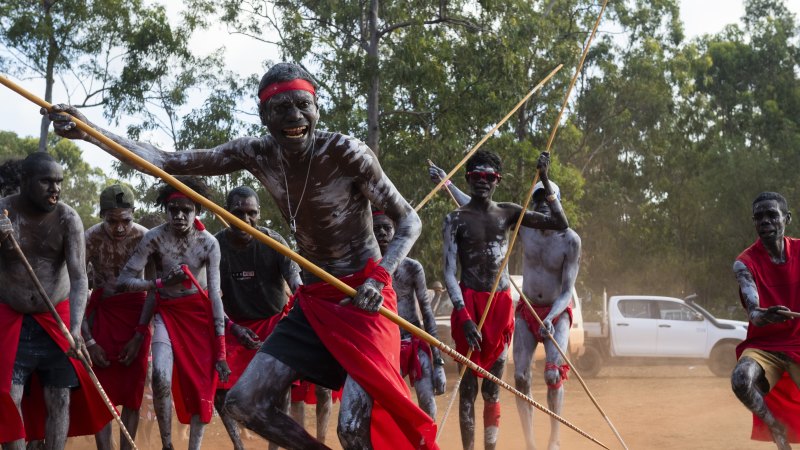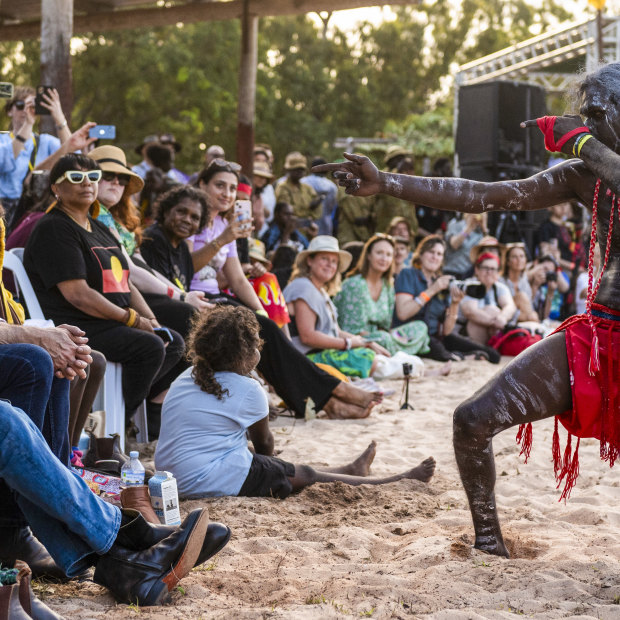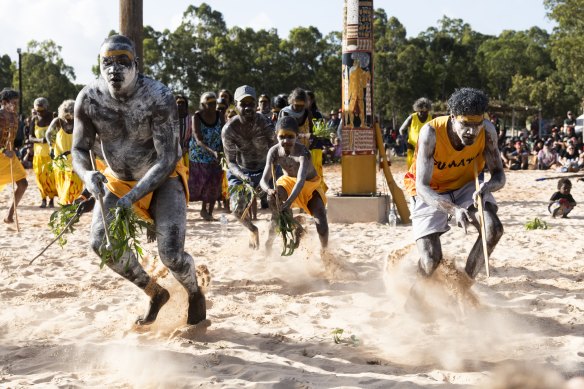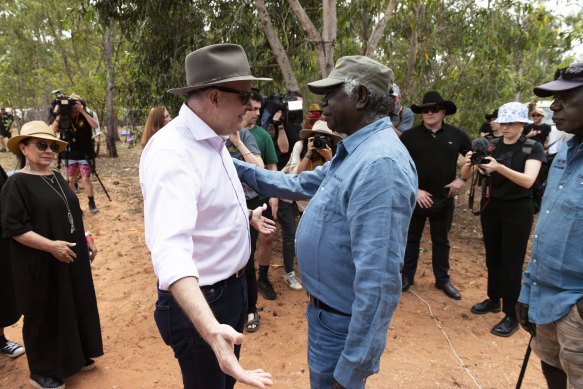By Rhett Wyman
Prime Minister Anthony Albanese at the opening ceremony of Garma. Credit: Rhett Wyman
Save articles for later
Add articles to your saved list and come back to them any time.
From Sydney it takes three flights and some 4000 kilometres of travel to reach Gulkula, the ceremonial site for the Yolngu people of north-east Arnhem Land where the Garma festival is held annually.
As a Palawa man and an Indigenous photographer, covering Garma in 2023 takes me right back to February 13, 2008, listening to Kevin Rudd’s apology speech. Not only was it a significant day for reconciliation in Australia, but as a 19-year-old, I remember feeling for the first time a momentum that has only recently been realised.
The opening ceremony of Garma.Credit: Rhett Wyman
Fifteen years later, I am one of a large media contingent that has landed in this remote part of north-east Arnhem land. We are here to witness the gathering of key Indigenous leaders and figures from across Australia and Prime Minister Anthony Albanese give a resolute speech. This is my first visit to Garma and the range of emotions is palpable. Excitement, stress, awe …. and bit of hunger too.
The humidity and heat add to the adrenalin overdrive; unlike covering the halls of Parliament House in Canberra, where I usually work, there is something surreal about being part of this event in this significant time.
This year’s Garma festival comes at a time when conversations about the Voice are at an all-time high. I felt an unmissable buzz almost immediately walking into the bunggul (ceremony) grounds lugging about 20 kilograms of camera gear.
It is a sensory overload. My mind quickly switches to the needs of the newsroom.
For the next 48 hours, my job will be to capture the political aspect of the festival, the cultural elements and the keynote speeches in a way that is both immersive and transformative.
Prime Minister Anthony Albanese greets Yolngu elder Djawa Yunupingu at the Garma Festival on Friday, August 4.Credit: Rhett Wyman
There is overwhelming pressure to do this assignment justice while also wanting to make my own personal contribution to the coverage of the festival as an Indigenous photographer.
But, like all news events, there are elements thrown at you that are outside your control.
The remote location proves a logistical nightmare. Even with a personal Wi-Fi dongle, photos take up to half an hour to send to the newsroom. This leads to more than one moment of pulling my hair out and (unhelpful) calls from the photo desk asking what’s happening.
Two hours in, I quickly realise that my original plan to do a portraiture series is ambitious.
The size of the media pack, while fantastic for the coverage of the festival, also means fighting for the perfect shot.
Djawa Yunupingu embraces Albanese after his keynote speech. Credit: Rhett Wyman
Challenges aside, to part be of the festival on a professional scale is something I could have never predicted back in 2008.
I am no longer on the sideline watching, but now I am part of it all, and responsible for documenting what is an important event of vital interest to the national audience of The Sydney Morning Herald and The Age.
Most Viewed in National
Source: Read Full Article




